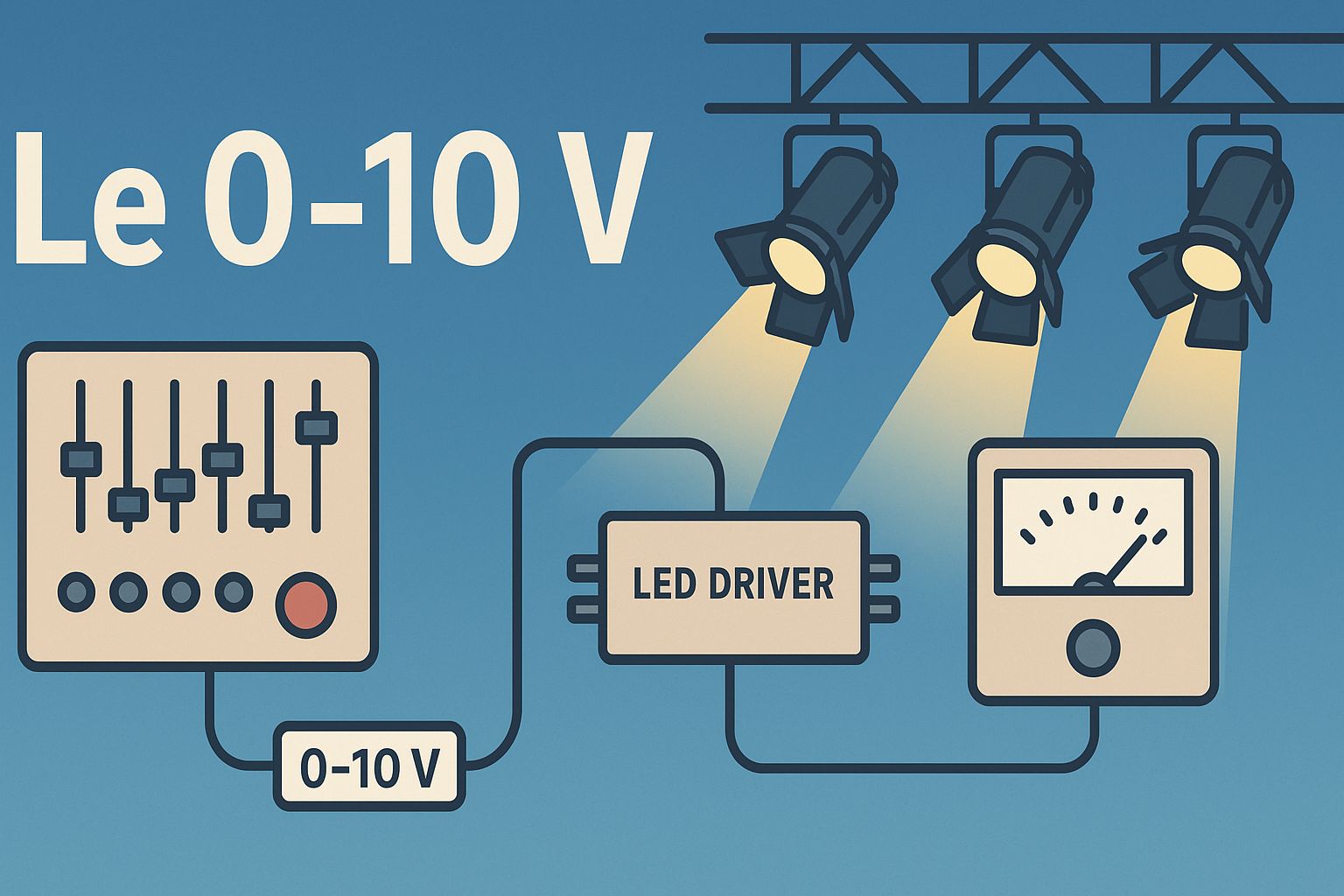0-10 V control

0-10 V control was an analog standard mainly used for lighting control, especially in professional installations (offices, stages, commercial buildings, etc.).
🔌 What is 0-10 V Control?
It’s a direct current (DC) voltage signal sent to one or more devices (usually LED drivers, dimmers, or ballasts) to control the light intensity.
- 0 V = lights off or at minimum brightness.
- 10 V = lights at maximum brightness.
- Values between 0 and 10 V = proportional dimming.
📜 Historical Context:
Before digital protocols like DMX512, lighting control systems relied on analog signals to adjust brightness.
- Each lighting channel (fixture or power circuit) was individually controlled via an analog voltage.
- Typically, a lighting console would send a 0 to 10 volt signal to each input of an analog dimmer, which determined the output level (and thus brightness).
🧠 How Does It Work?
1. The controller (command source):
A dimmer, automation system, console, or rotary knob that sends an analog signal between 0 and 10 volts.
2. The driver or ballast (receiver):
It receives the voltage and adjusts the power delivered to the connected lamp or LED.
🎛 Example Operation Table:
| Voltage (V) | Light Level |
|---|---|
| 0 V | Off or 10% (depending on driver) |
| 1 V | ~10% |
| 5 V | ~50% |
| 10 V | 100% |
⚠ Some drivers do not turn off completely at 0 V — a separate ON/OFF contact may be required.
🔌 Wiring:
- Two wires for the luminaire’s power supply (phase/neutral).
- Two wires for the 0-10 V control signal (often marked + and –).
✅ Advantages:
- Simple to implement
- Low cost
- Good compatibility
❌ Disadvantages:
- Not addressable (all luminaires receive the same signal)
- Sensitive to interference over long distances
- Requires dedicated wiring
📡 The Arrival of DMX:
With DMX512 (introduced in the 1980s by USITT), everything changed:
- Digital multiplexed signal
- A single cable can carry up to 512 channels
- Less sensitive to interference
- Allows addressing, memory scenes, effects, and more
✅ Conclusion:
Yes, 0-10 V was the standard that came before DMX for controlling power dimmers in stage lighting, but it has been almost entirely replaced by DMX, which is more flexible, more powerful, and much easier to wire.

